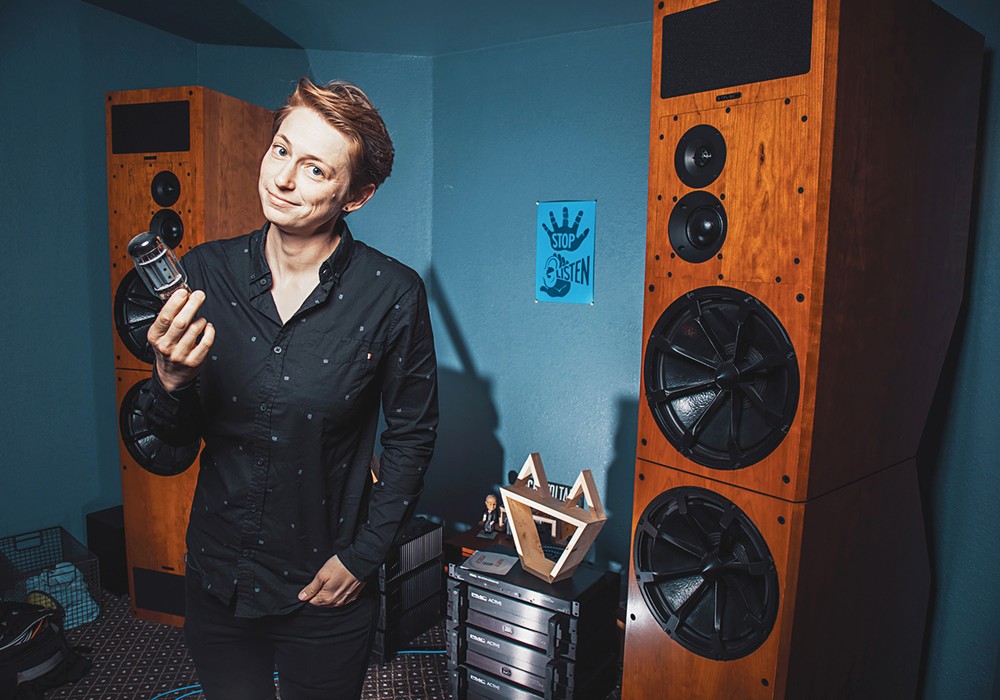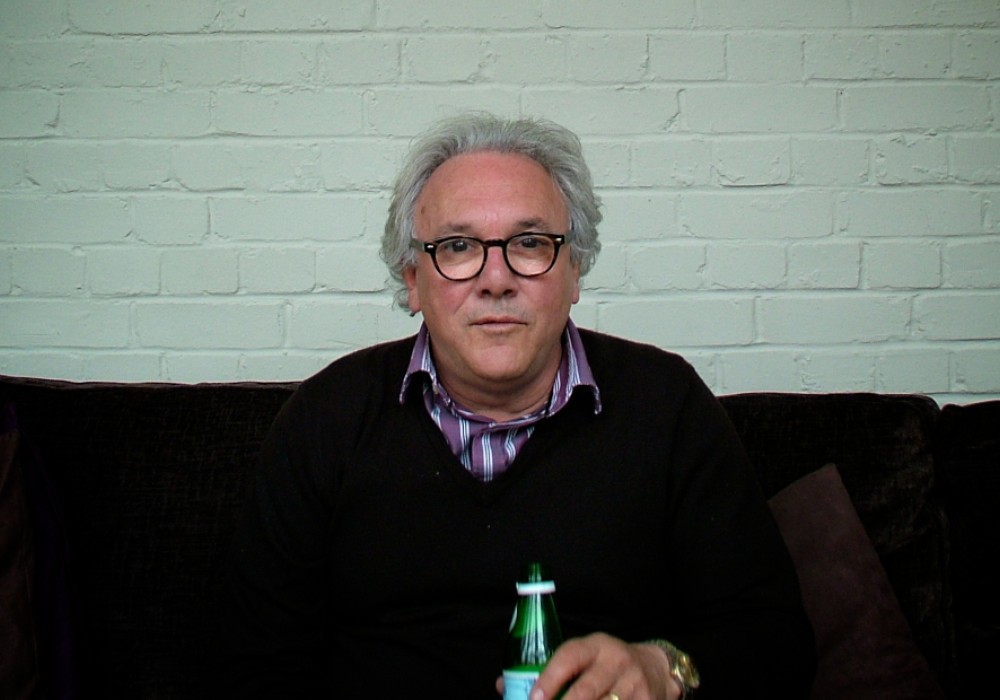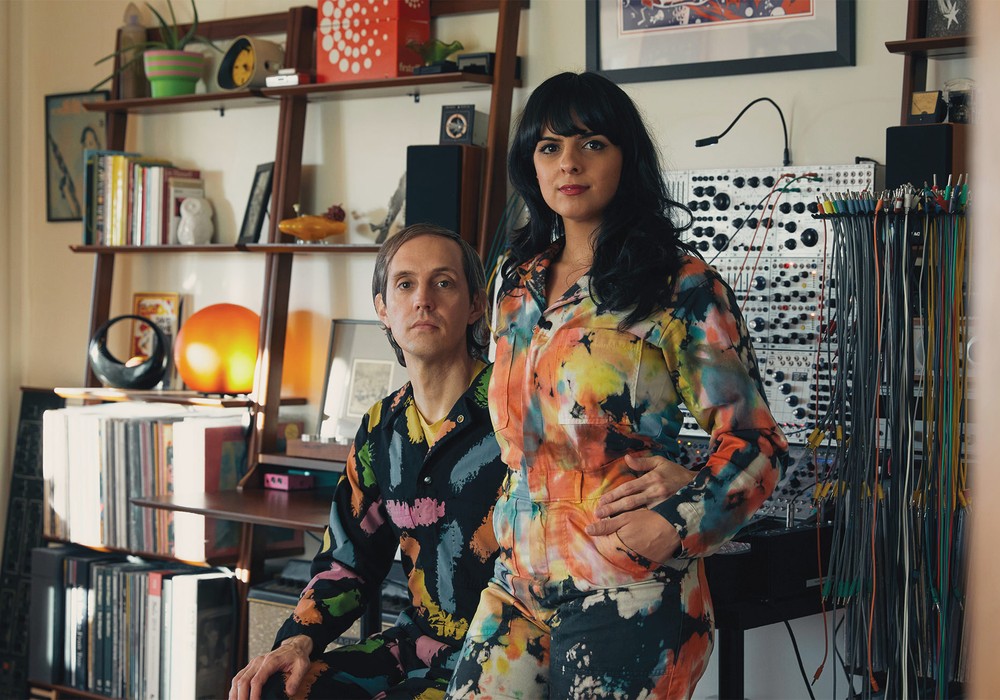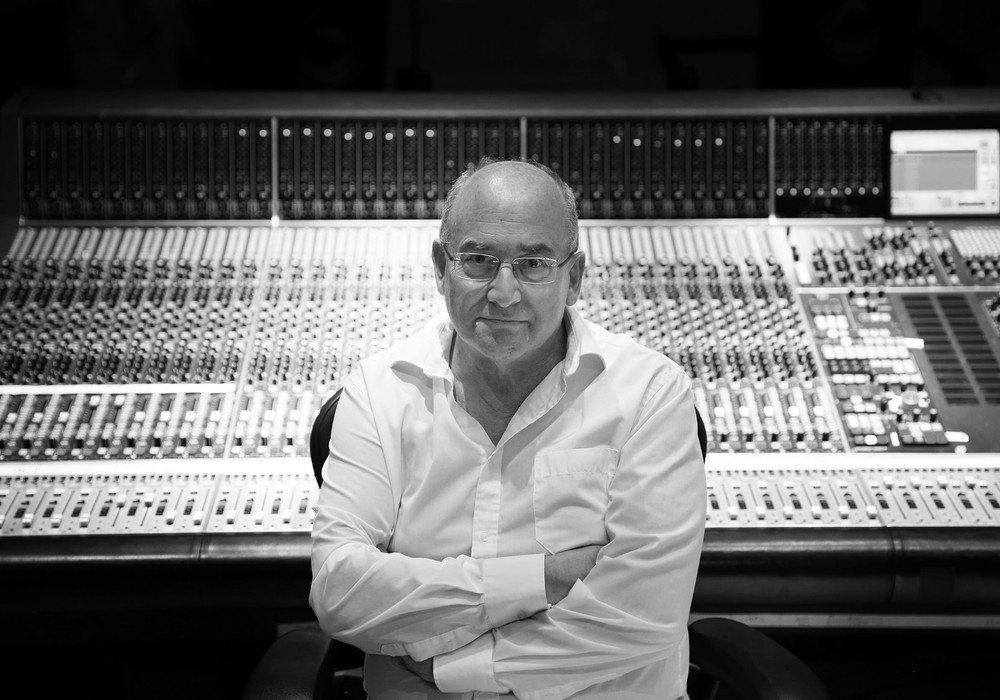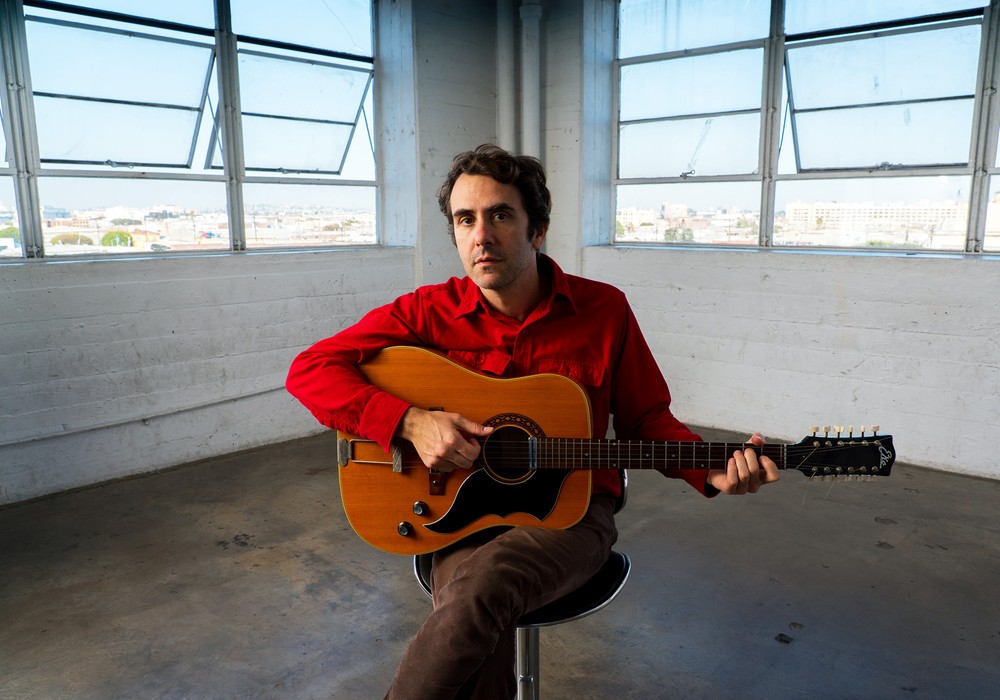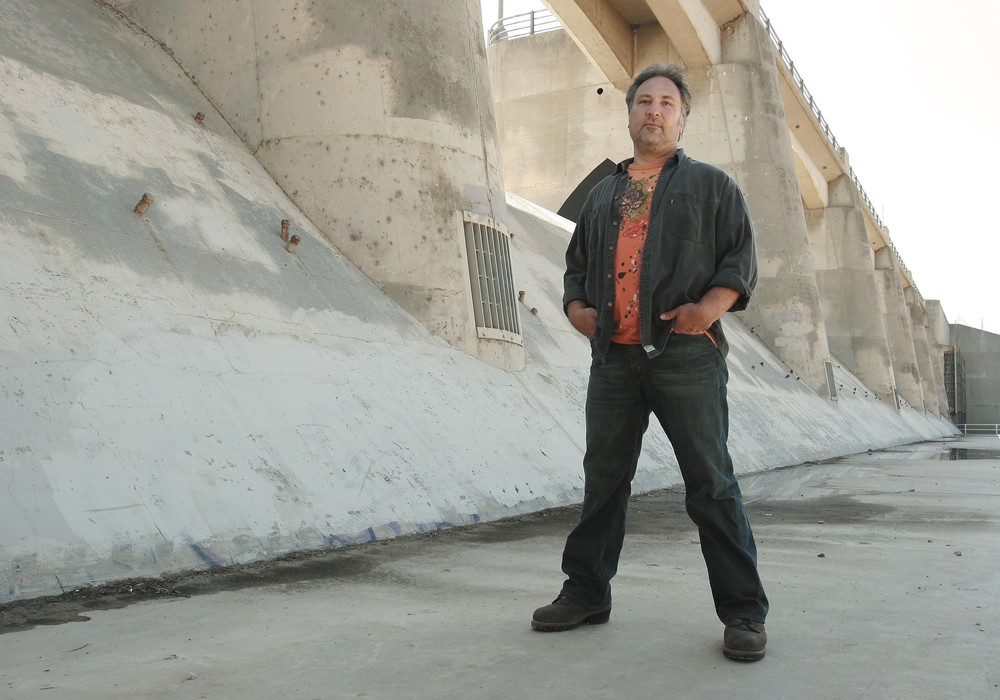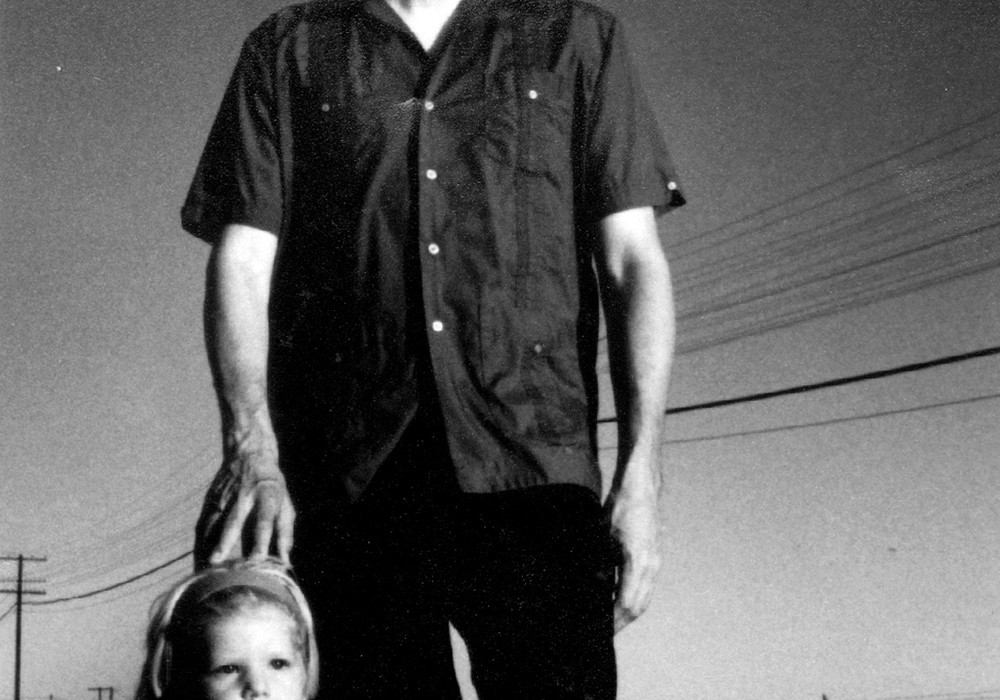The pro audio market has historically been a small, insular world populated mostly by small, specialized companies. The market for recording studio products just wasn't large enough to warrant the involvement by larger manufacturers. The eventual takeover of the studio equipment market by larger companies started gradually in the '70s and '80s. But the explosive growth of home studios over the last decade brought with it a stampede of newcomers to the recording gear business. Where there were once a handful of studios in most cities (other than the 'industry' towns of L.A., NYC, Nashville, etc.), suddenly there were thousands of bedroom and basement studios and they all needed gear. While some existing studio equipment companies caught the wave and grew with the market, many of the products sold to these new studios were manufactured by the consumer electronics industry. Fortunately, the domination of the market by large corporations has not closed the window of opportunity for small companies with a great idea and well-built products. The products available from these smaller outfits are often both higher quality and, surprisingly, often less expensive — the Really Nice Compressor from FMR Audio being a well known example. We selected three companies, each offering a unique service or product, and interviewed their founders: Wes Dooley of Audio Engineering Associates, Brent Averill of Brent Averill Enterprises and Jim Williams of Audio Upgrades.
Wes Dooley: Audio Engineering Associates
Audio Engineering Associates is unique in that its success is not based on one idea or product line. AEA manufactures replica RCA ribbon microphones, sells the products of several small manufacturers, designs and builds a range of microphone stands and 'Decca trees', and is a leading proponent of stereo recording techniques.
AEA seems to do a little of everything. You manufacture microphones, you sell other companies products — do you see any particular future direction for the company?
Well, you're sitting in a room that used to have a big Sony console and tri-amp Genelecs, we had thirteen employees and we were selling 3.5 million dollars worth of equipment a year and we were having no fun anymore. So the company is way smaller now. It's basically myself, and a handful of assistants, and we do things that are more fun. We're not trying to be big — we did that and it was no fun. We're a small specialty company. We come from the days when if you were doing this stuff, you built your own consoles, or if not the consoles, you built the specialty equipment, because you needed it and no one else offered it. The advantage of being a smaller operation is being able to say to people, 'No, we don't do that. You want to call so-and-so.'
How do you feel about the current directions of audio recording?
I'm very impressed with digital. Initially I was not very impressed with digital. That's because we were comparing it to 30 ips 1/2' tape, a very mature technology, where we took a Studer A80RC and had tweaked it. And we were comparing digital to that and it didn't stand up. Today, that's no longer true. Right behind you is a computer that has a Lynx sound card in it. It will do 24 bit/96 Hz, and it sounds pretty good. And I heard Tony Faulkner's rig over in England, which has quad over-sampling, and it sounds damn good! And it's a lot smaller than a 30 ips, 1/2' 2-track.
Can you identify any ready-made opportunities for the next audio entrepreneur? Any markets that are not being served?
Most of the needs are probably in the software area and user interfaces. As I've gotten more involved with digital, things like Diamond Live, which is a wonderful high-end cleanup tool, to the more standard things like Cool Edit Pro and Wave Lab, I find that most of them do similar things, the real difference is in the user interface. When we did a design project for a client a few years ago, we realized that the user interface was now the main thing. It was no longer the technical question of 'Can we do this?' but instead, 'What kind of user interface can we give them and can we provide the reliability they require?'
How did you get started manufacturing the replica RCA microphones? Were you providing repair services prior to building your own?
Twenty years ago our former chief engineer was heavily into RCA microphones. He introduced me to a variety of people, including John Sank, who worked at RCA from 1960 until 1976, when they shut down the microphone division. He was in charge of microphone production and he was the person who showed me how to re-ribbon RCA mics.
When you decided to begin producing your own RCA-type microphones, did your design include any upgrades or changes to the original RCA design?
We started out with the conceit that we would build a modern version and that we could improve this. Spending enough time working with the microphones and talking with John Sank, it became apparent that they had thought the design through pretty well. What makes the RCA microphones so desirable is that they had an extraordinarily talented crew of designers working for them in R&D in the 1930s. These people listened very carefully to what they were working on and they were good physicists. The current conceit, of course, is that we have much better, more accurate precision machining. The truth of the matter is that back then they could hold tolerances to a ten thousandth [of an inch] or better, but these were highly skilled labor people. That's how Cal Tech could build 200 inch telescopes. Precision is not anything new, what is new is that we can repeatedly make things very precise without having these highly skilled people around so much. In the '30s and '40s, labor was cheap, and materials were expensive. I know this well because the 44 is an expensive microphone to build, it eats time. That's why we have old school people like Michael Mroz, who enjoys this work, stamp their initials in every unit, and like the fact that it is still going to be around one hundred years from now.
Other than the ribbon microphones, you and your shop are also well known for championing direct-to-stereo recording. What is the appeal of stereo recording?
That's actually where we started, it's what I do. Most people know me as a ribbon microphone evangelist. That's because Wally Heider taught me that if you were going to record a big band, you were going to put out 44s and 77s. But here's how it goes' I got started on the radio back in 1961 and I thought mono was just fine, even exciting. Then I met a friend in the Physics Department at Cal Tech and he had two really big Altec speakers, and a transformerless, all tube power amp. Bob Gerbracht and I ended up founding AEA together until he later left to go to work for NASA. Bob and I both really liked to go out and record things. Our first deck was an Ampex transport with electronics that Bob had built from scratch. Together we would build equipment for the radio station at Pomona College. And many of the products we first developed were based on the needs we had while producing our live recordings. From there I got involved in writing on the subject of stereo recording — here is a paper that I wrote with Ron Streicher, 'Basic Stereo Microphone Perspectives — A Review', that was presented at an international conference on recording in 1984. Ron is the author, along with F. Alton Everest, of The New Stereo Soundbook, which we published because it is absolutely imperative, if you want to develop a conceptual vocabulary, that you really want some new ways to think about things. To learn from and to build on the work of those who came before us. I look at the things we do, the ribbon microphones, that's Wally Heider, that's Richard Heyser, who owned the particular 44 that I copied. We offer the stereo microphone positioners to hold microphones in the right place, because, as Wally Heider taught me, there is nothing more important than where you place the microphone.
In addition to your own products, AEA offers the products of a select group of other manufacturers: Coles, Daking, Dorrough, Bryston, etc. What attracted you to these products and what else do you plan on offering in the future?
We tend to try and offer the tools you need to accomplish the basic things that you need to do. At one point we sold everything to everybody. We now specifically try to offer some things that we think, from our own experience, are very useful and are hard to come by. Until you actually try and do these things, you don't understand a lot of details. We're selling things like mic stands, notice that ours are black, others are often silver. Why do we do ours in non-reflective black? Well, video is very much a fact of life now. We want the stands to disappear in the shot as much as possible. Ron Streicher is head of recording for the Aspen Music Festival. Anything new that we are looking at, we send up there and we let him and the interns use it for the summer and they tell us whether they like it or not. This is one more example that I have no particular vision' the Dorrough meters. Mike Dorrough told me about these meters and I said, 'Michael, these meters are almost $1000 for a pair of meters, No one will pay that money.' And he said, 'Let me loan you a pair.' And a couple of weeks later he asked if I was going to give them back. And I said, 'Nooooo!' I believe Mike was one of the first people to pick up on how important the user interface is. And the user interface, as we talked about earlier, is even more important with any metering device.
Brent Averill: Brent Averill Enterprises
The long running demand for 'vintage' components culled from the classic analog consoles only increases every year. There is no shortage of companies offering to clean up your old modules, wire up a power supply and rack-mount them. But one man's name has become a trademark of this industry specialty ' a 'Brent Averill rack' is prized as much for the quality of his work as it is for the classic API or Neve module that it contains.
How did you get your start in audio?
I started tinkering with electronics when I was a kid, radios, TVs — almost anything. My first job in the business was in high-end home audio, the really esoteric stuff. I got into pro audio in the mid-'70s when a friend who worked at a recording studio in Rochester, NY, called me to help out with their equipment — I didn't even know what a patch bay was back then. I went to work full time for another studio for a year or so and then I moved to Los Angeles. My first job out here was as a tech for Westlake Audio, and then I was the first field tech for the 3M digital recorders that Westlake used to rent out. That was a complete trial by fire. I can thank Westlake Audio for my being self-employed because those recorders became such an impossible job to maintain that I quit. Being self employed in Los Angeles is interesting — you can specialize in such a finite little niche that you can barely even describe and still make a good living at it. And also, new ideas are more easily accepted here than they might be elsewhere ' and it may seem funny now, but in the mid-'80s, using an old outboard mic preamp was a new idea. When I first started out on my own, all I did for the first 8 years or so was refurbish old consoles. I realized that console refurbishing is a job that never ends. Once you start it just never finishes. And the profitability' there were just so many jobs where I made about 3 dollars an hour. That's where I got the idea to take the modules out and make rack-mount units for sale. My first product was to take the old API 312 cards and build them into preamp modules. It was just so much easier to make a customer happy with a little stand-alone preamp. With a console refurbishment, it was a never-ending job. So it didn't take me long to move completely over to the module business.
Looking at what you do here, the services and products you currently provide, what's working and what's not? Anything you anticipate having to change?
I think that a real good front end on a signal path is going to work no matter how the recording format changes. Tape machines of any sort, analog or digital, are going to be dinosaurs. It's all going to be hard disk. But a good front end will still have value.
Have you been really impressed by anyone else's products or ideas? Has anything made you say, 'I wish I had done that?'
This is going to sound funny, but the Mackie console I thought was pretty revolutionary because, quite honestly, I wish I could give people that much for the money. As esoteric as my business is, I respect people that can bring something to the masses for a good price. I wish people could buy Neve 1272s for $500 per pair.
Do you see any ready-made opportunities for budding entrepreneurs? A need that isn't being served?
I think anybody that comes along with a great product, something new' like, for instance, the Empirical Labs Distressor. There's a modern compressor using modern technology that has real character. Anybody who comes along with something like that has a great future. If somebody can come up with equipment that sounds as good as this vintage stuff and the price is more reasonable, and it's new — that's a niche that's always open.
Here's the obvious question for someone in your line of work — why refurbish modules from old consoles — haven't we learned anything about circuit design in the past thirty years? Why wouldn't it be easier to start with a clean sheet of paper?
Obviously, there have been a lot of technological advances, but in the days when these consoles were built, the late '60s through mid-'70s, there were no big corporations involved in making recording equipment. You had people like Rupert Neve and others who made just really phenomenal equipment and who just weren't concerned with using a $3 part instead of a $7 part. You just didn't have that mentality going on in this industry. For their love of what they were doing, they said, 'This is how it ought to be done' and they did it that way. And that situation would be hard to find nowadays. If you got funding for a company to make a recording console you'd have people to answer to — you'd have stockholder meetings, and they ask why you are spending so much.
When does it stop? The supply of original modules has to be nearing its end. What do you do then?
Oh boy' move on to my own designs? I can design and build to the same level of quality as these refurbished modules, it can be done but it will be expensive. That is the obvious transition and I do have ideas and preliminary designs ready. But I've got enough inventory right now that it's not going to be an issue for quite a while. And I don't see any end to the availability of the modules themselves. As the size of consoles has continually grown to 50, 60, 80 or more channels, the 36 channel APIs just aren't big enough for the big commercial studios. And the prices are so high that it's more profitable to sell the parts to me than to keep the boards whole. I part out all the modules and end up with an empty frame. I recently paid $90,000 for a 28 channel Neve board, and after I refurbished all the modules into rack-mount units, I made a little money and end up with the console frame you see over there for free, which is going to be my own console. So I'm getting my parts from consoles that people are retiring.
Other than rack-mounting the units and wiring up a power supply, what else do you do to the old modules?
We refurbish them and try to keep everything as authentic as we can. We aren't really trying to modify things — we do use some better quality capacitors and some other little changes, based on listening tests. But other than that we don't really go in there with the intention to modify things.
It's a rehab not an upgrade?
Exactly. I don't complicate the signal path, I keep everything very simple and keep all the wire runs short and use silver solder and keep it so that the heart of it is preserved as best we can. Basically, we try to give them to people in 'like new' condition, so that it's as reliable as anything new they could buy. And we give it a warranty — we have that much faith in the final product.
A dozen other guys have stuck Neve modules in a rack with their name on it, but you have had more success than all the others combined. Why?
[laughing] I don't know. I talk to my helper about this a lot. I don't think we are doing anything that's all that different. I think that some other guys, when somebody has a problem, they get argumentative, which is a real bad approach. If you're on the phone, and even if you know darn well that the problem is due to user error, you just can't get an attitude. So I guess that's what I do, I run a business the way I would like to be treated and somehow it works. I do spend a fair amount protecting my reputation but it's money well spent. Because when I do go to sell something, it's already sold. People call me and I have no idea how or where they heard about me, they just ask me to ship them a unit. And I don't know who said something good about me, but someone must have. We just got a unit in last week from Nashville that we sold seven or eight years ago, but we just fixed it and sent it back because it was a bad solder joint that I didn't catch, so no charge even though it was that long ago. But on the other hand, if somebody sends something back after six months and they've dragged it behind a car, they might get a call from me, but that doesn't happen very often. But it's funny, a lot of the repairs that we do get in aren't the modules themselves, it's the things that I'm buying brand new, like the power supply modules or new connectors. The failures aren't in the thirty year-old units but in the new stuff.
For the items you primarily work with, mic preamps and equalizers, are there any technological improvements on the horizon or is the technology so mature that it has reached its practical limits?
What I'm dealing with is more of a nonlinear thing, the kind of coloration that these preamps put into the signal — it's very hard to quantize or model. At some point they might be able to develop a model sophisticated enough to be able to make improvements in this nonlinear, subjective area — that could happen. But these preamps were just naturally perfect for music, especially for what these people were looking for. I don't think that I could really improve upon that. All I could try to do is make them in larger quantities and cheaper, I'd love to do that. Like the Really Nice Compressor, I'd be so proud if I could offer a $200 mic preamp. But it would have to be a completely different design, there is just no way to cut corners on these units, you could maybe trim a few dollars out of the units without affecting the sound quality. These preamps are very expensive, but there is just nothing that you could remove to substantially reduce the cost. But hopefully my customers feel that they are well worth the money when they use them to record.
There has been something of a demand for a small, high quality analog console, say 8 x 2, or maybe up to 16 x 8. Have you ever considered to try to serve that demand by reassembling some of these modules into a small, high quality board?
I actually started doing that with old API components, I have some prototypes out in the shed of a 10 x 2 board, but I never finished it.
You didn't see a market?
I saw how much it cost and how many expensive parts went into it and I didn't think people would be willing to pay what it really cost. A little line input console with ten inputs would have been probably $4000. But then the GML came out and his was $20k, of course his also had EQ and all that, but I just didn't know if anybody would pay that.
Geoff Daking has one, and Manley has their 16 x 2 and they are both a lot more money than what you were heading towards.
And are people going to pay that? Quite honestly, all I'm planning is a new mixer, not using the old modules, either an 8 x 2 or 10 x 2 base unit and then an expansion chassis that has another ten or twelve inputs. But it's just going to have line inputs so that you can use it with your existing preamps and it's going to be rack-mounted. The idea of having a sidecar is appealing, but I think that people are more interested in being able to customize a rack-mount, modular unit.
Jim Williams and Audio Upgrades
A company that focuses on improving the products of others is a niche that exists in few other industries. And, except for a few noted microphone gurus, it's not exactly a common occupation in the audio recording equipment business. Audio Upgrades has created a thriving market for their upgrades to a wide range of audio products.
How did you get started in the pro audio business and what led you into this unique direction?
I was a film major at Cal State, and even back then I was working on the equipment, both in the film department and the radio station. I've been doing this since I was a little kid — I was always a "half left brain, half right brain" type of kid. Kind of like Tom Scholz (of Boston), where you've got this artistic, musical touch thing going on, while also having this scientific inquisitiveness that always makes you want to turn every pebble over to see what's on the other side. Part nerdy scientist, but also into sports, and I've been playing guitar since I was 10 years old. I've had formal music training — I went through the full music program in college, while doing the film thing. So, I just combined the two. When I got out of school, I did some work with Rex Bogue in the early to mid-'70's, building guitars for guys like John McLaughlin. Maybe you remember the guitar with the vines on it and carvings? I actually have a circuit here that came out of one of those guitars.
So those guitars had active electronics back then?
Oh yeah. We were doing active electronics design for guitars in the early '70s. Because guitar pickups are high impedance devices with limited output and bandwidth and totally reactive on how you plug them in, what kind of cable, how long the cable is... just too many variables. So we tried to get the pure sound of the transducer off the guitar. Worked with a lot of musicians in those days, mostly doing guitar electronics for guys like Frank Zappa. Then I went out on my own and hooked up with Stevie Wonder, worked with him for many years on several tours — still occasionally work for them, basic electronic work, tweaking' Basically, I was contacted by Stevie in 1979 because they had heard that I could extract unusual and unique sounds out of instruments. So from the early '80s on, I was set up here designing and building studios, refurbishing consoles and upgrading equipment.
Any thoughts on the current direction of recording technology and where we are headed?
Absolutely. I think that there is a real downturn in the quality of audio in general, particularly in the pro recording industry. I think that the bar has been severely lowered' the causes could be debated by people, but, mainly, the manufacturers looking to expand their markets into less professional realms. ADATs broke the studio store, karaoke broke the talent pool, MIDI broke the composition pool, and now we have one-man-orchestras, record producing people in every bedroom in America, and of course, that has diluted the quality of talent. If you did the same thing with pro sports, no one would ever score a touchdown or make a basket. It's called lowering the bar. If people accept lower quality, you can get them to buy more junk. It has become very difficult to convince people to pay more for a quality product. You can't blame the corporations as they're in business to make a profit. The only people that seem to be pushing quality in audio are small cottage industry audio companies. It has been thrown on our shoulders to take the audio ball and move it forward. It's not that great because we don't have the resources that large corporations do — I don't have a laboratory. I've got good quality test equipment, like Audio Precision, but I don't have a hundred of them, and a hundred engineers behind them, a budget of a million dollars to play with things all day long. And I don't have an anechoic chamber to test things in the acoustic domain. We're befuddled because we don't have the resources but we have inherited the responsibility.
Do you think that people would be willing to pay more for a high quality product from a large corporation, or do they expect a small boutique brand name when they lay out big money for a top quality product?
That explains why the vintage market is so hot and why people pay exorbitant prices for a piece of equipment that cost $300 thirty years ago. I think that's a stock market in miniature — that's gambling. Who's gonna say if this stuff is going to hold its value or not? It could change on a whim... if some guy is interviewed in a magazine article and he says he doesn't use any old crap, only new. A couple of trade magazine articles like that and the whole market changes. Personally, I feel that people should ignore the recommendations of others and learn to trust their own ears. And that will save you from standing in the same lines at the Guitar Center six months from now because the gear you bought didn't give you the sound you were looking for. I've cashed out on most of my vintage gear while the market is still near its top. You've got to worry about where you'll find analog recording tape and decent quality tubes. That's why the 'New Old Stock' [NOS] market is so hot among audiophiles, because they know that these tubes were built to higher standards and quality than they can't be made, or aren't being made today. It's a value thing once again, I'll pay $100 for an old preamp vacuum tube if I know that it's of a higher standard of quality and it will hold up for a number of years. It's better than buying junk and having to change it every year.
Can you identify any unserved markets that are just waiting for a small company with a great idea?
I think that someone should come out with a dual ribbon microphone, split it with a small ribbon for the highs and a larger one for the lows. I'd like to hear that. That's the problem with existing ribbon microphones ' the laws of physics. You can't have a ribbon with enough mass to handle the low frequencies and, at the same time, have enough small, micro movement to capture the high frequencies. That's why you only see ribbon tweeters in speakers. They know that you can't put a 20 Hz to 20 kHz ribbon in a speaker and make it work. Physics.
How did you create a market for upgrading the products of others?
It was education — I had to convince people that what they were hearing wasn't everything that there was to hear. And that they were missing a lot of information. Once I demonstrated that at a couple of AES shows, it was just a matter of customer feedback. My customers are my best advertising.
On large items, like a mid-level console, all of the possible upgrades quickly add up to many thousands of dollars, often more than the item's worth. How do you help someone determine how far to go with upgrades versus putting the money towards a new purchase?
Here is a module out of a cheap console, a Soundcraft 200 Delta. This console cost about four to five grand new. It's a modular console built to professional standards. The circuit design on this is first rate. Balanced line in, great mic pre design, very nicely done EQ.
Does that mean that this console is worth upgrading, because the basic design is good?
Absolutely. The idea with this module is that it is very simple, but has the potential of very high quality. For one thing, when the modules are cleaned up, the console will have cross talk specs of better than 90 dB, left to right. That's extremely impressive. The signal to noise ratio will be about '105 dB on the stereo bus. The distortion will be .0008%. This is all confirmed on the Audio Precision system. What's done on here is a lot of rework. Every resistor has been pulled and changed. The idea of this hotrod is to create the ultimate location classical recording console, the ultimate, highest quality in an 8 x 2 or 8 x 4 format for mixing multiple mics in a classical orchestral thing. Get the maximum amount of dimensionality spread, which that crosstalk spec holds in. The lowest noise and distortion — even if you use outboard preamps, this still would be an excellent console for that use. A lot of power supply decoupling, a lot of phase compensation to make these amplifiers stable. The chips that were originally in this console were the famous TL072 op amps found in most cheap English consoles.
Yeah, I've got a little Trident filled with them.
Exactly. The chips that gave English consoles a bad reputation. The chips that made people spend $200,000 on old Neve discrete consoles. These chips that I have installed are made by National Semiconductor. They have gain of 90 dB in the audio band versus 40, and they have a slew rate of 3000 volts/microsecond versus about 10. And the coupling capacitors I changed using new devices from Rubicon instead of the old Panasonics. Teflon silver wire. We coat each switch internally with a liquid semiconductor. So there are just big improvements across the board.
A big problem now is that there are almost no affordable consoles for sale with modular construction that will allow for these sorts of upgrades.
But fortunately, with the influx of digital consoles, the used market is filled with older analog consoles available for pennies on the dollar. They are such good values right now, I don't see why anybody wouldn't jump on them — similar to the way plate reverbs were available about ten years ago.
Any feedback from the original designers or manufacturers of the equipment that you upgrade?
Yeah, I get a bit here and there. Most of it is off the record and I respect that. I'm not there to tell anybody that you didn't know what you were doing, and you screwed the thing up and now I'm fixing it. I just say, "You did a great job, you did the best with what you had, with what you were allowed to do, but forces beyond your control limited what you were allowed to do. The marketing people told you to stop, while you may have wanted to go farther, perhaps even farther than I would go, but they are not going to allow you to do that." They are usually totally aware of what's going on. They just know that they have to fit their price range. Often I estimate that if they were to include the changes that I do, it should only have cost them another $50, but the corporate forces must multiply that by five, so they estimate it to cost another $250. It's typically a "five times cost" markup, so that $50 upgrade gets translated into a $250 price increase.
Do you see a serious impact to your business by people switching from outboard gear to plug-ins?
I don't think that it's going to happen anytime soon. Simply because the people using all the plug-ins are confirming that for themselves. None of the plug-ins sound as good as the REAL THING. Well, maybe that's because a simulation ain't like the real thing, baby! Would you rather watch a movie about going to Disneyland or would you rather go? Personally, I like the real experience. I'm not into "virtual reality" and that follows into simulations of sound versus the actual sound.
One benefit of the massive growth in the studio equipment industry has been the opportunity for companies to succeed outside of the mainstream. Small companies with a good idea and a well-conceived plan are capable of carving out their own share of the larger market. These guys all serve market segments largely ignored by the major pro audio manufacturers. Their success might surprise a business analyst, but anyone who spends five minutes with any of these three would expect nothing less. Wes, Brent and Jim are all passionate about their work. Each has managed to turn their hobbies into successful careers. They are all examples of what happens when your work is based on producing a quality product, not hitting a market driven target price. Their reputations within the industry, and the word-of-mouth recommendations among their customers, seems to provide the majority of advertising for all three of these companies. As studio owners, we should all be glad to have these sort of companies available as alternatives to the consumer electronics giants.
Contact info:
Audio Engineering Associates: www.wesdooley.com
Audio Upgrades: www.audioupgrades.com
Brent Averill Enterprises: www.brentaverill.com
Women in Audio | No. 141
Piper Payne: Respect For the Craft
by Ian Brennan
A drummer turned mastering engineer, Piper Payne is a Bay Area audio professional who I’ve long admired. She has worked with the likes of The Go-Go’s, Shannon & the Clams, Third Eye...


